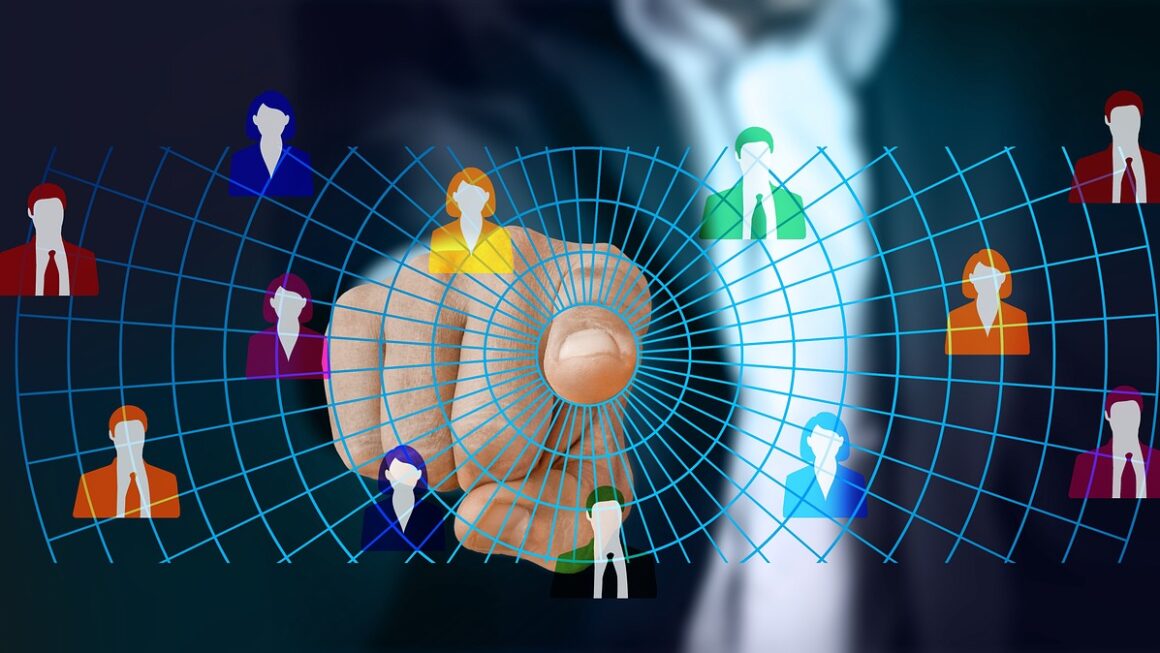The world is increasingly driven by voice. From virtual assistants answering our every beck and call to AI-powered customer service bots, artificial intelligence is transforming how we interact with technology. AI speech technology is rapidly evolving, offering unparalleled opportunities for businesses and individuals alike. But what exactly is AI speech, and how can you harness its power? Let’s dive in and explore the fascinating world of AI speech.
Understanding AI Speech Technology
What is AI Speech?
AI speech encompasses the ability of computers to understand, interpret, and generate human speech. It’s an umbrella term covering several technologies, including speech recognition (converting audio to text), speech synthesis (converting text to audio), and natural language processing (NLP) which helps the AI understand the meaning and context of the speech.
- Speech Recognition (Automatic Speech Recognition or ASR): This technology allows machines to transcribe spoken language into written text. Think of voice-to-text apps on your phone or voice commands used to control smart devices.
- Speech Synthesis (Text-to-Speech or TTS): This technology transforms written text into spoken audio. Examples include screen readers for the visually impaired or AI voice assistants reading out notifications.
- Natural Language Processing (NLP): NLP is the crucial link that allows AI to not just recognize and generate speech, but to understand its meaning, intent, and context. NLP enables AI to engage in meaningful conversations.
The Evolution of AI Speech
AI speech technology has come a long way. Early systems were clunky and limited, often struggling with accents, background noise, and complex language. Today’s AI speech engines leverage sophisticated machine learning algorithms, allowing them to achieve near-human levels of accuracy and naturalness. Key milestones include:
- Early Rule-Based Systems: Relying on predefined rules and patterns, these systems were limited in their ability to handle variations in speech.
- Statistical Models: Using statistical models like Hidden Markov Models (HMMs) improved accuracy but still required significant manual tuning.
- Deep Learning Revolution: The advent of deep learning, particularly Recurrent Neural Networks (RNNs) and Transformers, revolutionized AI speech, enabling dramatic improvements in accuracy and naturalness.
Applications of AI Speech
AI speech is finding its way into numerous industries and applications, transforming how we work, learn, and communicate.
Customer Service and Support
AI-powered chatbots and virtual assistants are increasingly used to handle customer inquiries, resolve issues, and provide personalized support.
- Example: A customer calling a bank can interact with an AI-powered virtual assistant that answers frequently asked questions, provides account information, and even processes simple transactions, freeing up human agents to handle more complex issues.
- Benefits: 24/7 availability, reduced wait times, cost savings, and improved customer satisfaction.
Healthcare
AI speech is used to transcribe medical records, assist in diagnosis, and provide remote patient monitoring.
- Example: Doctors can dictate patient notes directly into an AI-powered system that automatically transcribes the speech into structured medical records, saving time and reducing errors.
- Benefits: Improved accuracy, reduced administrative burden, and enhanced patient care.
Education
AI speech tools are used to provide personalized learning experiences, assist students with disabilities, and automate grading.
- Example: An AI-powered tutoring system can listen to a student’s spoken answers, provide feedback, and adapt the curriculum to their individual needs.
- Benefits: Personalized learning, improved accessibility, and reduced teacher workload.
Entertainment and Media
AI speech is used to create realistic virtual characters, generate automated narration, and translate content into multiple languages.
- Example: Video game developers can use AI to create non-player characters (NPCs) with realistic voices and personalities, enhancing the immersive experience.
- Benefits: Increased engagement, cost-effective content creation, and wider accessibility.
Benefits of Implementing AI Speech
Implementing AI speech technology offers significant advantages for businesses and individuals.
- Increased Efficiency: Automating tasks such as transcription, data entry, and customer service frees up human employees to focus on more complex and strategic work.
- Reduced Costs: AI-powered solutions can significantly reduce labor costs and improve operational efficiency.
- Improved Accuracy: AI speech systems can achieve higher levels of accuracy than human transcribers, particularly in noisy environments or when dealing with specialized terminology.
- Enhanced Accessibility: AI speech technologies such as screen readers and voice assistants can make content and services more accessible to people with disabilities.
- Improved Customer Experience: Providing 24/7 support, personalized interactions, and faster response times can significantly improve customer satisfaction.
Challenges and Considerations
While AI speech technology offers tremendous potential, there are also challenges and considerations to keep in mind.
Accuracy and Reliability
Despite advances, AI speech systems are not perfect and can still make errors, particularly when dealing with accents, background noise, or complex language. Careful training and optimization are essential to ensure accuracy and reliability.
Privacy and Security
AI speech systems often require access to sensitive data, raising concerns about privacy and security. It’s crucial to implement robust security measures to protect user data and comply with privacy regulations.
Ethical Considerations
The use of AI speech raises ethical questions about bias, transparency, and accountability. It’s important to ensure that AI speech systems are fair, unbiased, and used responsibly.
Integration Complexity
Integrating AI speech technology into existing systems can be complex and require specialized expertise. Careful planning and execution are essential for a successful implementation.
Getting Started with AI Speech
If you’re interested in exploring AI speech, there are many resources available to help you get started.
- Cloud-Based AI Speech Platforms: Major cloud providers like Amazon (AWS), Google (Cloud Speech-to-Text and Cloud Text-to-Speech), and Microsoft (Azure Cognitive Services) offer powerful AI speech APIs that are easy to integrate into your applications.
- Open-Source AI Speech Libraries: Open-source libraries like Kaldi, CMU Sphinx, and Mozilla DeepSpeech provide a flexible and customizable option for developing AI speech applications.
- AI Speech Development Tools: Various development tools and frameworks are available to simplify the process of building and deploying AI speech applications.
- Training and Consulting Services: Numerous companies offer training and consulting services to help you learn about AI speech and implement it effectively.
- Consider a Proof of Concept (POC): Before committing significant resources, consider starting with a small-scale POC to evaluate the potential benefits of AI speech for your specific use case. This allows you to identify potential challenges and refine your approach before a full-scale implementation.
Conclusion
AI speech is a rapidly evolving technology with the potential to transform numerous industries and aspects of our lives. From improving customer service to enhancing accessibility, the benefits of AI speech are undeniable. By understanding the technology, its applications, and its challenges, you can harness the power of AI speech to drive innovation and create new opportunities. As AI continues to advance, we can expect even more exciting developments in the world of speech technology.




